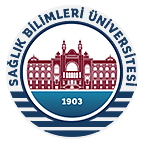ABSTRACT
The aim of this study was to investigate the diagnostic and therapeutic approaches of our patients diagnosed to have adnexal torsion at our clinic. Demographic characteristics, clinical and Doppler ultrasonographic findings, histopathological results, treatment modalities and postoperative results of 64 patients who were treated with laparoscopic surgery due to adnexal torsion at our clinic between June 2003 and June 2010 were retrospectively analyzed. The mean age of the study group was 28.3 years. The most commonly observed clinical symptom was pelvic pain (98%). All patients underwent Doppler ultrasonographic analysis, and decrease or absence in ovarian blood flow was observed in 50 patients (78%). The mean diameter of the adnexal masses was 8.1±2.3 cm. Only adnexal detorsion was performed in 7 (11%) patients, 13 (20%) patients had detorsion and cyst aspiration, 40 (62%) patients had detorsion and cyst excision, 3 (5%) patients had salpingo-oophorectomy, and one (2%) patient had ovariopexy. The most frequently reported pathological diagnosis was mature cystic teratoma (37%), whereas simple cyst was the second (31%) frequently encountered pathological result. Laparoscopic approach should be the primary diagnostic and therapeutic method in patients who had a suspicion of adnexal torsion and did not complete their fertility. Rapid and accurate preoperative clinical and ultrasonographic evaluation of these subjects have a great importance in performing organ-preserving surgery by laparoscopic approach.



